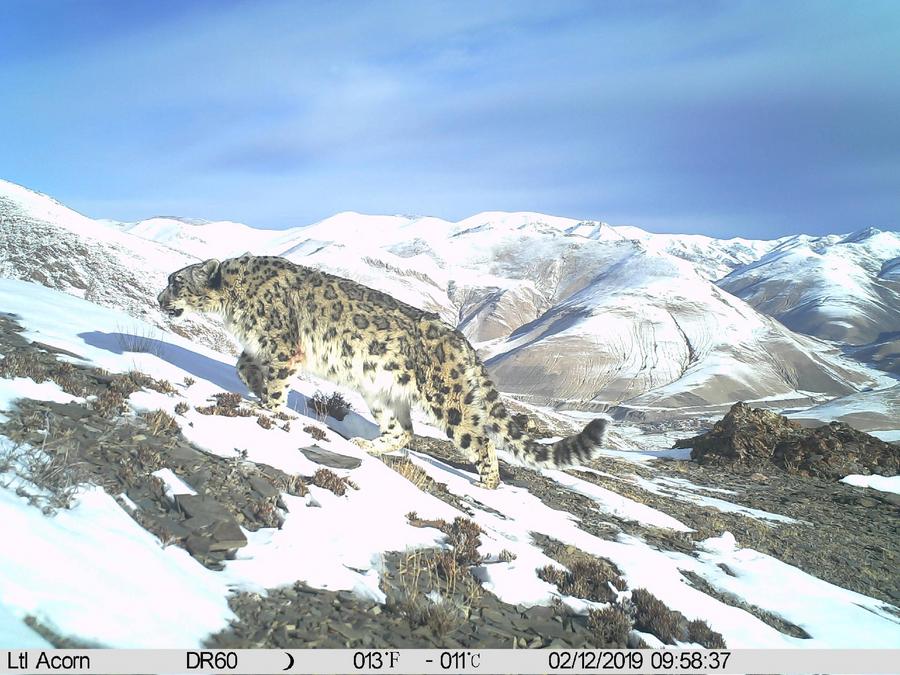Rare leopard fossils show unique evolutionary path


An international research team has revealed the snow leopard's unique evolutionary path by studying rare snow leopard fossils discovered across the Eurasian continent.
The study, published recently in the journal Science Advances, was conducted by researchers from the Institute of Vertebrate Paleontology and Paleoanthropology, and the Institute of Zoology, both of the Chinese Academy of Sciences, along with collaborators from Italy, Portugal and France.
The snow leopard, a large feline native to the Qinghai-Tibet Plateau and its surrounding regions, is renowned for its adaptations to extreme high-altitude environments. Due to the scarcity of fossil evidence from the plateau region, it's unclear how snow leopards evolved their specialized adaptations to this environment.
The researchers analyzed five snow leopard fossil records from locations outside the plateau including Beijing, Gansu province, France and Portugal. By combining DNA sequences with morphological data, they determined that the fossilized snow leopards were not an independent lineage but small offshoots of the main snow leopard branch.
"It is likely that these offshoots represent multiple dispersals of snow leopards out of the Qinghai-Tibet Plateau at different times," said Deng Tao, a researcher from the Institute of Vertebrate Paleontology and Paleoanthropology.
By comparing key morphological features of fossilized snow leopards with modern specimens, the team found evidence that the species underwent significant changes during the Middle Pleistocene period some 2.58 million to 11,700 years ago.
"This timeframe coincides with the emergence of large ice sheets on the Qinghai-Tibet Plateau," said Wang Shiqi, a researcher from the institute.
Since the Middle Pleistocene, increased global climate variability has led to more severe and prolonged glacial periods. These conditions likely enabled snow leopards to expand their range beyond the plateau, Wang said.
The study also revealed that while the fossil sites are generally located at relatively low elevations, they were situated in mountainous environments.
"It suggests that mountainous terrain and the availability of related prey may have been more critical for snow leopards than the high-altitude, low-oxygen conditions," Deng said.
"These insights are important to the ongoing conservation efforts of the flagship species on the Qinghai-Tibet Plateau and also prove the usefulness of preservation paleontology," he added.
Xinhua





































